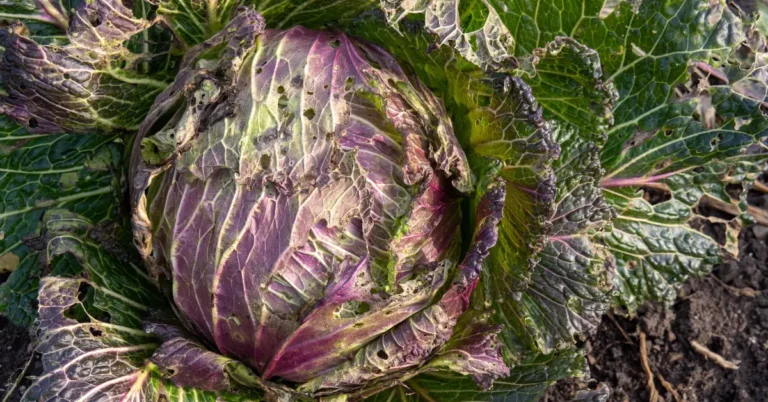How to grow kale microgreens and their Benefits
You can grow tiny kale plants in your home! Besides being good for you, these little greens taste great and are a great addition to your diet. Check out these simple steps for growing and eating kale microgreens.
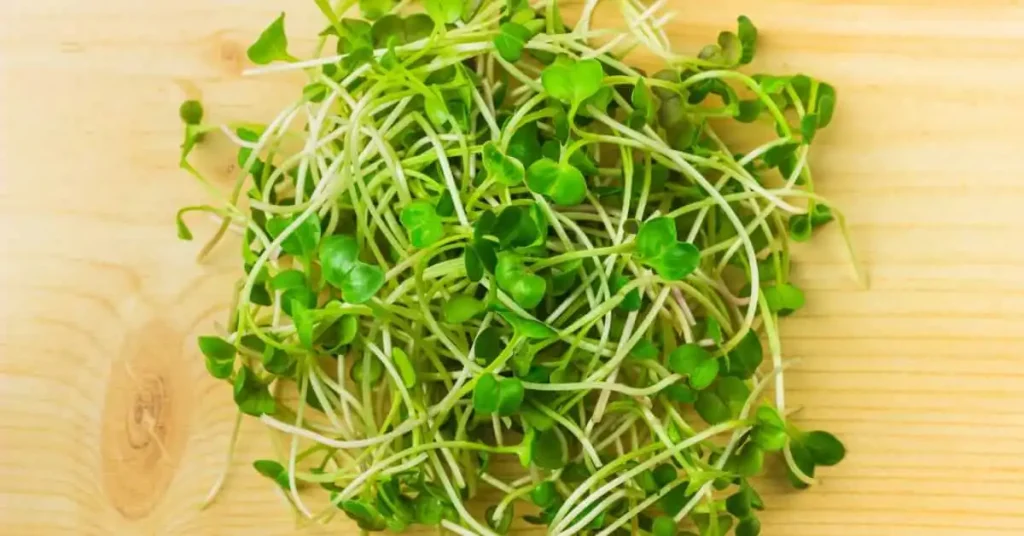
What Are microgreens?
Microgreens are young, soft plants picked early in the season, usually before their first real leaves appear. They are smaller than sprouts but not as small as baby greens. Due to their size, they enhance salads, sandwiches, and meals. Kale microgreens are incredibly colorful and flavorful.
Why are kale microgreens good for you?
The consumption of these little greens will result in an improvement in your overall health.
1. Nutrient-rich
One of the main health benefits of kale microgreens is that they are high in nutrients. These little greens contain minerals and vitamins like iron, calcium, and vitamins A, C, and K. Due to their nutritious value, kale microgreens enhance nutrient intake.
2. Antioxidants Properties
The chlorophyll and pigments in kale microgreens are very good at fighting free radicals. Antioxidants fight free radicals in the body, which stops oxidative stress. Adding kale microgreens to your diet can lower your risk of getting chronic diseases.
3. Promotes Heart Health
Adding microgreens and kale to your diet can help your heart health. In addition to assisting with cholesterol regulation, fiber also plays a role in blood pressure maintenance. Eating kale and microgreens may lower your risk of heart disease.
4. High in Vitamins
Kale microgreens are rich in vitamins needed for numerous biological functions. Vitamin A is essential for good eyesight and the immune system. Vitamin C helps the resistant system work and makes collagen. Vitamin K is necessary for healthy bones and blood clotting. Including kale microgreens in your meals is an easy way to get more daily vitamins.
5. Mineral Enhancement
Kale microgreens are full of minerals and vitamins that are good for your health. Kale microgreens have iron and calcium in them. Iron helps the blood carry oxygen around the body, and calcium helps bones and teeth stay healthy. Adding microgreens to your diet to get these minerals can help you keep your body healthy and balanced.
Find out how kale microgreens can benefit your health: tiny leaves have a significant impact.
6. Good for your digestive health
Regular bowel movements and avoiding constipation are two ways kale microgreens help your gut health. Adding these microgreens to your meals can help keep your gut healthy and improve digestion.
7. Managing your weight
Kale microgreens are a great way to control your weight because they are low in calories and nutrients. A lot of fiber makes you feel full, which contains your hunger and keeps you from overeating.
8. Having anti-inflammatory qualities
Having inflammation for a long time can lead to autoimmune diseases and cancer. Kale microgreens may help lower inflammation and improve overall health because they have anti-inflammatory properties.
9. Supports bones health
Calcium, magnesium, and vitamin K in kale microgreens are good for bone health. These nutrients are essential for keeping bones strong and preventing osteoporosis.
How to Grow Kale Microgreens at Home
The following steps will show you how to grow kale microgreens at home. These tiny green kale leaves are very healthy and simple to produce. You can grow these small greens in your home to enjoy their fresh tastes and health benefits. Find out how to raise little kale plants at home.
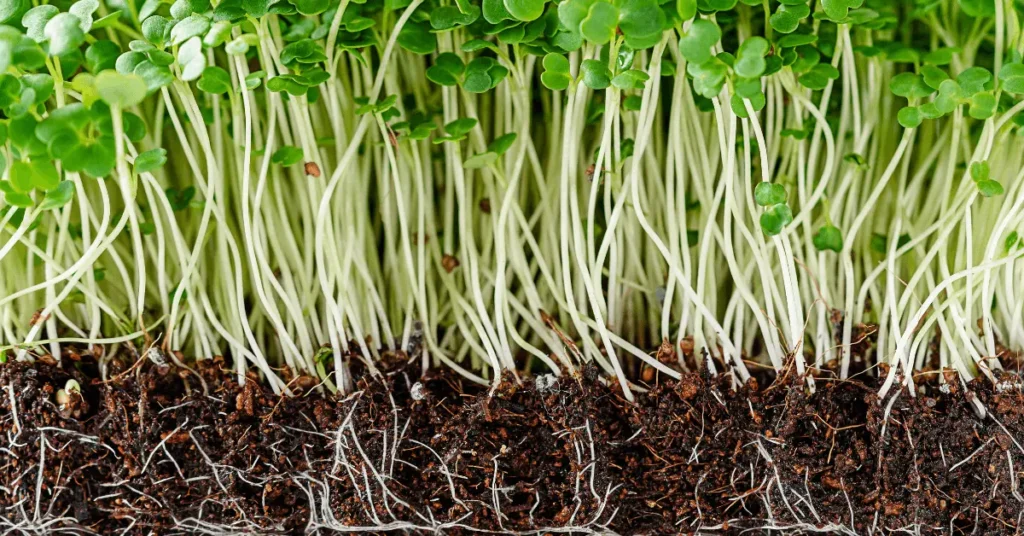
Picking Out Seeds
Picking the right kale seeds is essential in growing this healthy green. Select high-quality, non-GMO seeds from sellers you can trust. Make sure the seeds are still fresh and that they will grow well in your area. Pick the type of kale that fits your taste buds and growing goals, such as curly, lacinato, or red Russian.
Think about the space in your yard and plant during the right season for the best growth. If you buy the right kale seeds, you can make your home garden more colorful and nutritious.
Choosing the Right Soil
When choosing yard soil, look for a well-balanced mix that lets water drain and keeps nutrients in the ground. Choose loamy soil, a mixture of sand, silt, and clay, to ensure enough airflow and control of moisture.
Find out what pH level the earth is at and choose the right level for your plants. Most plants do best in a range from slightly acidic to neutral. Add organic waste like compost to improve the soil’s structure and fertility. Lastly, make sure that the type of dirt you use fits the needs of the plants you want to grow. This will give them the best chance to thrive.
Germination Process
To germinate seeds at home, soak them in water overnight to speed up the process. Soak the bases ahead of time and then plant them in a tray or pot with a seed-starting mix that has been well-drained.
Mist the dirt or put plastic wrap over the containers to keep the moisture steady. Put the setup somewhere warm and well-lit to help enzymes work for sprouting.
As the seeds spread, ensure they get enough light to thrive. Once the seedlings have solid roots and real leaves, you can move them to bigger pots or your garden.
Care and Harvesting
After planting the kale microgreens, it’s time to move on to the care and harvesting phase. This happens typically 10 to 14 days after the first true leaves appear. Put the tray somewhere that gets a lot of natural or artificial light. Microgreens will call between 4 and 6 hours in the morning every day this way.
As needed, water the microgreens, but don’t let the dirt get too wet. To pick the microgreens, cut them just above the ground with clean scissors. If you harvest at this point, the taste and nutritional value will be at their highest.
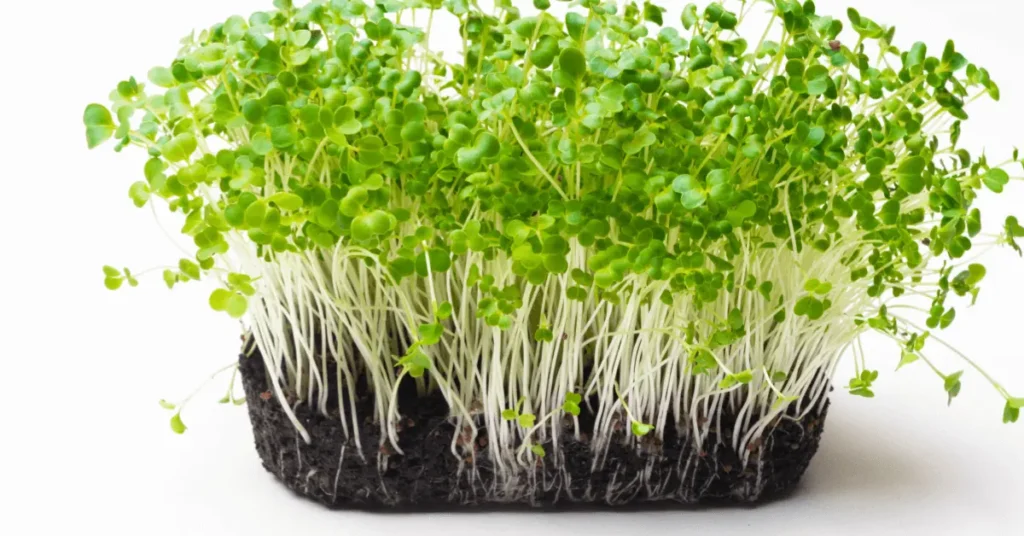
Adding Kale Microgreens to Your Diet
Once you’ve grown kale microgreens successfully, it’s time to use them in your cooking. Here are some tasty ways to cook these little greens:
Making sandwiches and salads
Microgreens of kale are a fresh and healthy way to top salads or sandwiches. Their spicy taste goes well with a lot of different foods.
Fruit drinks and smoothies
Adding kale microgreens to smoothies and drinks can make them healthier. Its mild flavor not only makes the drink taste better, but it also adds extra vitamins.
Garnishes and Toppings
You can add kale microgreens to soups, omelets, or any other food you want to make it look better and taste better.
Expert Tips for Success
To make sure your harvest is a success, follow these tips from experts:
Light Requirements:
Make sure the microgreens get enough light to thrive. When using artificial light, ensure it’s about 2 inches above the plants.
Air Circulation:
Enough airflow stops mold from growing and promotes strong growth. Turn on a low-level fan or crack a nearby window to keep the air moving.
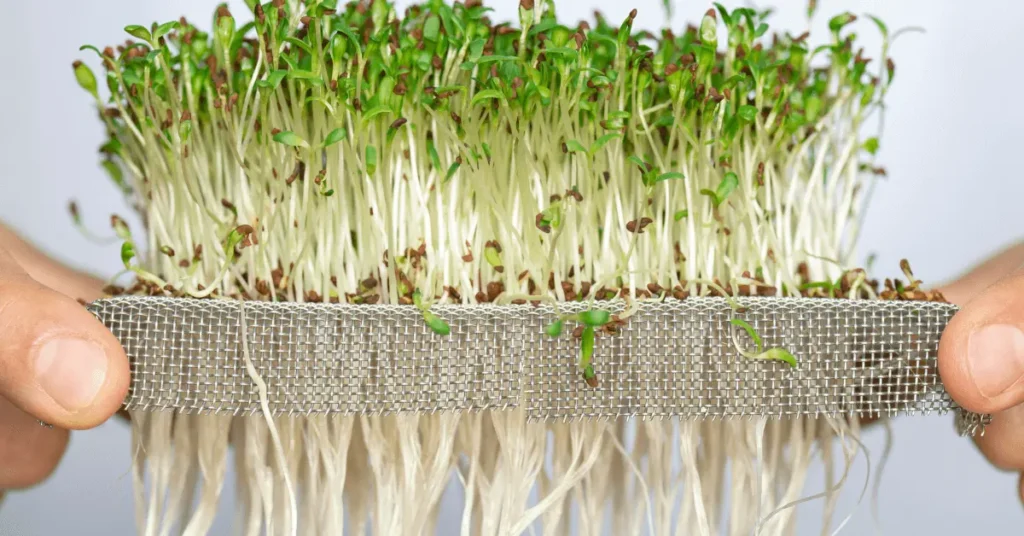
Temperature Control:
For best sprouting and growth, keep the temperature steady between 60°F and 75°F (15°C and 24°C).
Harvesting Time:
Harvest when the first true leaves appear for the finest balance of flavor and nutrition.
Conclusion:
Kale microgreens are a great way to improve your health at home because they are full of nutrients and low in calories and fat. The fact that they are easy to grow and taste great shows that good things come in small packages. Adding kale microgreens to your diet will make you healthier, no matter how much you know about gardening. Have fun growing and enjoying it!






